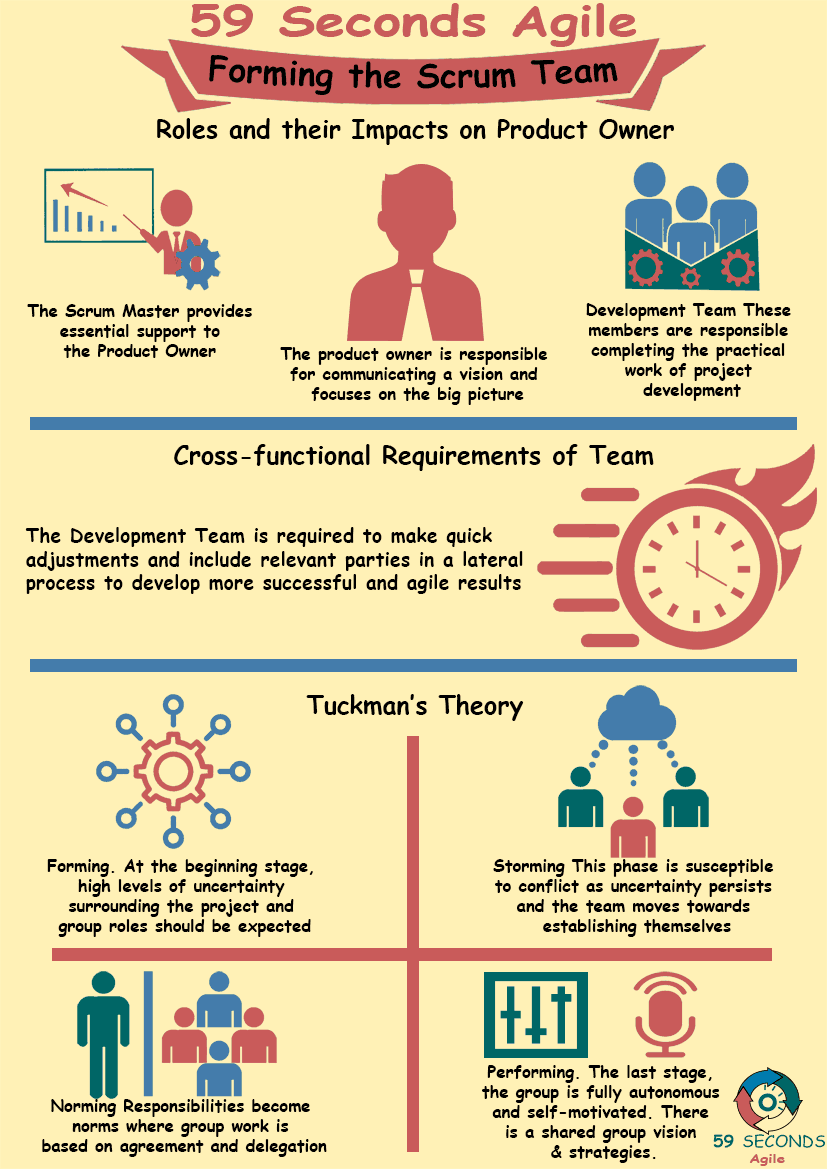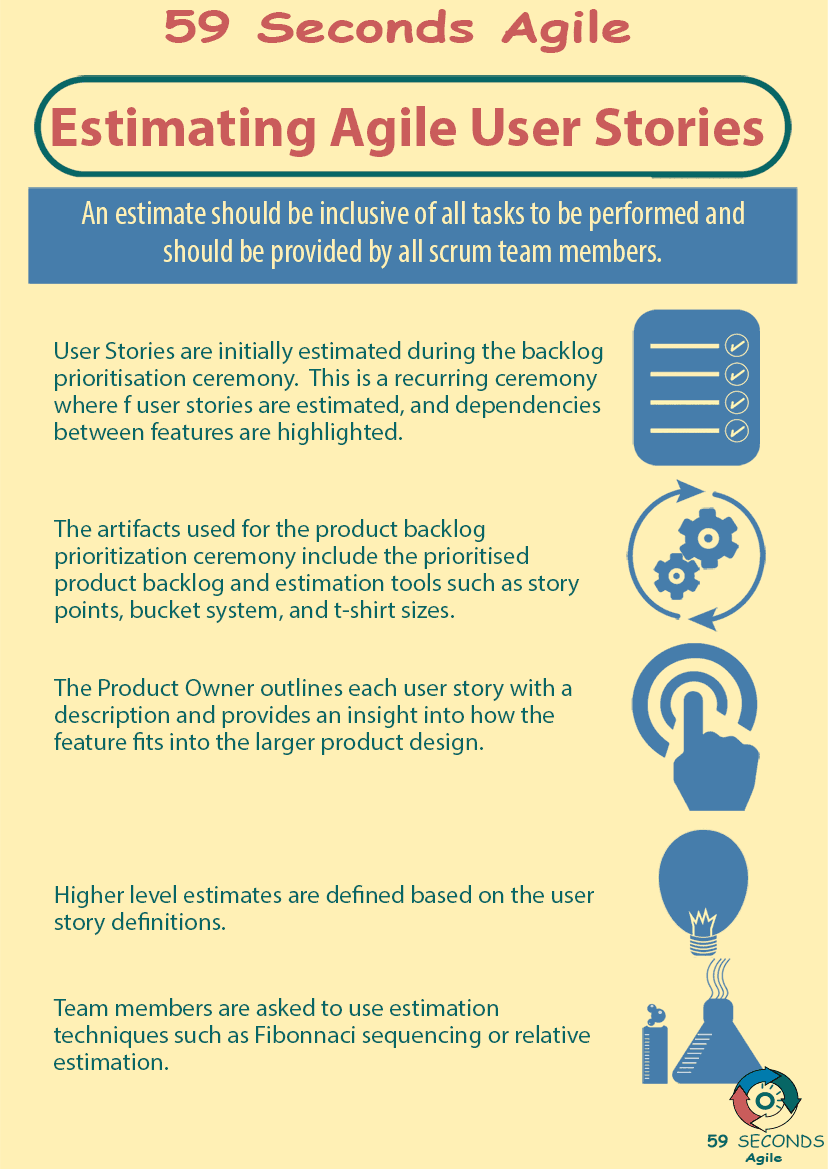What is the Scrum Team Definition and what are the Scrum Team Roles? What do each of the roles do? This article then takes a look at the Scrum team Formation and development and looks to the Tuckman theory of team formation. Focussing on the definition of the Scrum team and discussing who defines the definition of done on a scrum team.
Scrum Team Members
A 59 Seconds Agile Video Animation
Scrum Team Definition & the Scrum Team Roles- Part 2
A 59 Seconds Agile Article
In the case of developers on cross-functional teams, they must be able to collectively work on any features that a product may include. Most teams do contain more than one developer, but it is vital that these developers have skill sets that cover any requests that may come through the backlog. When teams are formed, they may have to pull developers from different duties in order to make sure they can cover front and back end, or whatever needs the individual product may have.
Cross-functional teams may occasionally have redundancy in roles, but this could be intentional. For projects that may have a large volume of work, one person may not be enough to handle everything within a sprint. It is convenient to have more one team member to have certain skills, especially if these skills will be in high demand for the project. Forming the team from a pool of people means that developers can shift around as their individual skills are more or less needed.
Scrum Team Definition: Tuckman’s Theory
Bruce Tuckman suggested that groups must develop together and that this development happens in stages. There are four basic stages: forming, storming, norming, and performing. Each of these stages has some unique details, and most teams that work together long term go through this process in one way or another.
For most team members, this process begins as the team forms. The formation stage happens when a team assembles for a specific purpose or project. This can include members who have previous experience together and are adding new members, or a group of people who have never worked together before. In the beginning, there may be some disagreements between team members. Inevitably, team members will work through the disagreements to achieve their mutual goal. As time passes, overcoming these differences results in better cohesion between members. This improved cohesion yields better performance from the team.

Scrum Team Definition: Stages of Tuckmans Theory
Developers often experience the stages of Tuckman’s Theory in some specific ways. Soon after the team forms, developers may be criticized for taking too long on tasks, producing code with errors, or failing to fix problems. Many of these problems are less on the individual developer and more on their interaction with other developers and other roles on the team (Scrum master, and the Product Owner who defines the definition of done on the Scrum team). As developers learn each other’s styles, they can work more effectively together on the same code. They also begin to think more like the testers and analysts on the team. This yields better communication, and fewer problems between roles. As developers learn their team, they work more effectively. Teams that have consistently worked together begin to outperform new teams that first come together.
Scrum Team Definition: Self-Organising Teams
The self-organizing teams of Scrum often work more efficiently than mandated teams, but this practice is not without issues. Each role must be able to work with the other roles, developers included. There are often hurdles that new teams must overcome. As the same team members work together, however, Tuckman’s Theory suggests that they become more efficient and cohesive to better handle new features and requests.
Prev <— Continue Reading —> Next
Learn More: Estimating and Planning User Stories
User Stories Applied
A 59 Seconds Agile Book Review
User Stories Applied by Mike Cohn is one of our favourite books on Agile User Stories. The book starts with an overview into user stories, and details what a user story is and the different aspects of them. He then discusses how to go about writing a user story, and provides details of the INVEST criteria that can be used to determine if the story is meeting all of its objectives. Next Mike gives an in depth discussion of who user stories are written for and where to begin when gathering the details for them. The book then discusses acceptance testing user stories, including how to go about specifying these criteria and the responsibilities of the development team and customers during this process.
Prev <— Continue Reading —> Next
Learn More: Estimating and Planning User Stories
Estimating Scrum User Stories
A 59 Seconds Agile Infographic

Prev <— Continue Reading —> Next
Learn More: Estimating and Planning User Stories
Our Favourite Agile Books
We found these books great for finding out more information on Agile Scrum:

